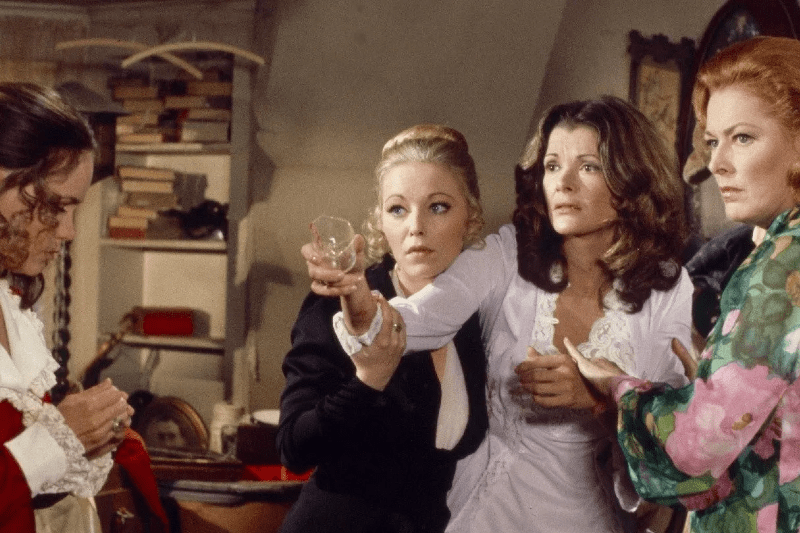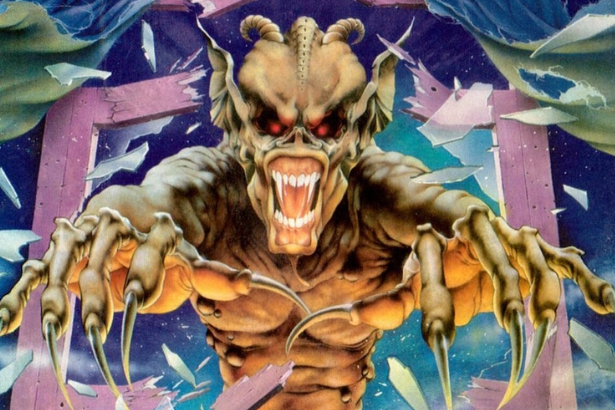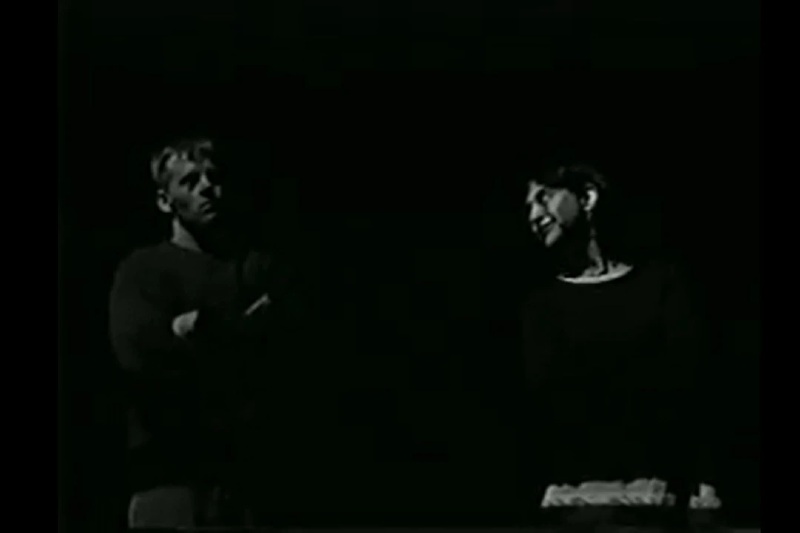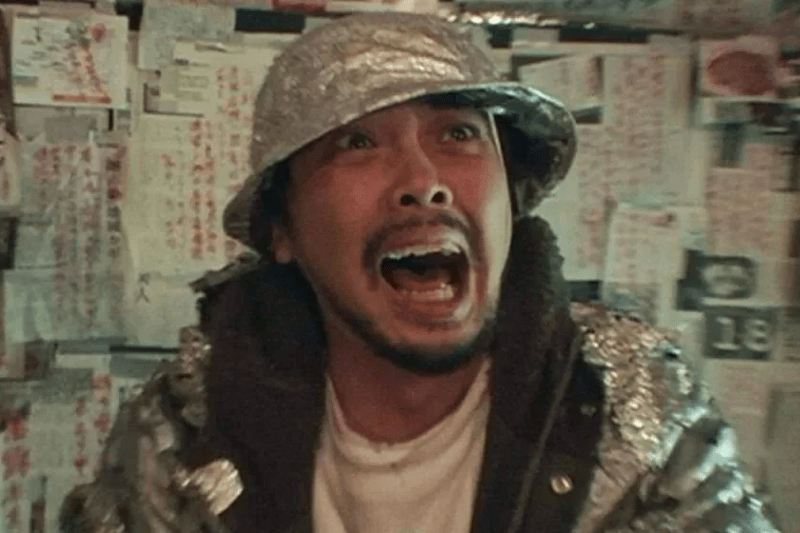From where does the slasher film come?
Like most genres, it’s hard to pin down exactly when the slasher technically “began.” Ask any horror film critic where a masked killer murdering people one-by-one got started and depending on how knowledgeable and/or snooty they are, the answers will probably vary. Certainly John Carpenter’s 1978 classic Halloween put all the pieces together in an easily copyable, profitable framework, setting the stage for a whole decade packed with successful, if not necessarily great rip-offs. We wouldn’t have The Burning or Friday the 13th or Prom Night without Halloween, that’s for sure.
But where the heck did Halloween come from in the first place? Dig a little deeper and you’ll find Bob Clark’s still-shocking Black Christmas (1974) had most of the set dressings in place, but before that Mario Bava’s 1971 giallo splatterfest Bay of Blood was assembling those set dressing from raw materials, so much so that it looks like they were jammed together in the editing room. Go back further and you’ll find Alfred Hitchcock’s Psycho and Michael Powell’s Peeping Tom, both of which creeped up the joint in 1960, although both films invited more sympathy for the killers than the typical, future slasher would. And we can certainly lay some of the credit on Agatha Christie, whose novel And Then There Were None (don’t look up the original title, just don’t) was a high body count whodunnit long before it became fashionable.
Yes, it sure seems like the history of the slasher genre is long and well-researched, and surely there isn’t a film that most people have never heard of which combines all the slasher movie elements before Black Christmas and Halloween — and features a gigantic all-star cast that includes Sally Field, Julie Harris, Jessica Walter, Eleanor Parker, Jill Haworth and Walter Brennan, with a screenplay by Joseph Stefano, who wrote the script for Psycho.
That would be ridiculous. How could a film like that slip through the cracks of history?
Well, that’s exactly what happened to John Llewellyn Moxley’s 1972 film Home for the Holidays. It’s a fully-fledged slasher that was released several years before common wisdom suggests the genre was properly born. Given that it stars a multiple Oscar-winner, the lead from Robert Wise’s horror classic The Haunting, the co-star of the classic thriller Play Misty for Me and cult hit shows like Arrested Development and Archer — and we haven’t even got to Walter Brennan, Jill Haworth and Eleanor Parker yet — it’s more than a little baffling to find Home for the Holidays wallowing in near total obscurity. It’s unavailable on conventional home video and largely overlooked if anyone bothers to glance in its direction at all.
Home for the Holidays is an effective and impressively acted horror thriller about a group of sisters reuniting at their father’s house for Christmas. Benjamin Morgan (Brennan) was abusive, their mother killed herself years ago, and he’s now remarried to a suspicious woman named Elizabeth (Harris), who allegedly killed her own husband too.
The sisters are Alex (Parker), who has taken on a matriarchal role in the family ever since their mother’s passing; Jo (Haworth), a sexually voracious individual with multiple ex-husbands; Freddie (Walter), who copes with her extreme mental illness through various addictions; and Chris (Field), who is relatively well put together, having been raised after many of the more traumatic events hit the household.
Why have they returned home? It’s because Benjamin is convinced that Elizabeth is slowly killing him, and now he wants his daughters to kill his wife. Although they all agree that’s probably not a good idea, and that he’s probably delusional — and that even if he was telling the truth they’d probably be happier with their father dead — they can’t help but look at Elizabeth suspiciously. She carries herself quietly, she listens carefully to every conversation they have about her, and every movement she makes has a weirdly sinister import.
Pretty soon the Morgan sisters are getting murdered, one by one, by a killer in a yellow rain slicker. It’s a TV movie from the 1970s so the kill scenes aren’t especially gory, but a stabbing with a pitchfork explicitly presages some of the Friday the 13th murders, along with creepy foot chases through the brambly woods outside. The episodic structure we’ve come to associate with slasher films — which typically lead from one slaughtery set piece to the next — comes natural to the network TV movie format, where each commercial break must be immediately preceded by a dramatic reveal or a shocking death.
But while the formal elements of the slasher genre are undeniably apparent in Home for the Holidays — even the holiday atmosphere and a climactic bedside shock eerily foreshadow Black Christmas, which came out two years later — the most bizarre thing about Moxley’s film, or at least its obscurity, is that the movie is, again, genuinely very good.
Baked into Home for the Holidays is a sense of true melancholy — a family torn apart by self-harm, children wrestling with their trauma in very different ways, which organically sets them at odds from each other. Alex speaks earnestly and mournfully about how she’s unsure if she’s the “emotional prisoner” of her sisters, or if they’re hers, unclear about where the cycle began or how to escape it. And all these years later Freddie still can’t wrap her head around why their mother took her own life. “So beautiful. Why die?”
Home for the Holidays isn’t so much a movie about murder as it is a movie about death in multiple forms. The inability of the Morgan family to confront the realities of their mother’s unfortunate end leads them to lash out at one another, blaming their father (whose abuse certainly didn’t help much) and treating it like a murder. By refusing to deal with their mother’s mental illness, most of the Morgan women have an excuse to ignore their own self-destructive, maladaptive behaviors, and tragedy was perhaps never far into their futures.
And then of course there’s Elizabeth, who looks like a red herring but is undeniably at the center of this ordeal. Every single thing she says and does looks suspicious, but also — depending on whether you believe her — every single thing also acquits her. She’s trying to care for people who don’t care for her and being punished at every turn, and her first husband’s death should, in a more just universe, bring her closer to her stepchildren, who have suffered similarly. We find out that Elizabeth’s first husband (probably) killed himself too, and her position as the local pariah stems only from the small town community’s refusal to accept that anyone possibly could. She’s the only character in the film who actually confronts death and accepts it, horrors and all (unless she’s the killer of course). Without giving anything away, the killer’s motivation is just as well thought out and sad as anything else.
Home for the Holidays has some memorable — if bloodless — thrills, and a story that’s finely crafted and stuffed with tragic, painstakingly designed characters. There’s a nuance here that most slasher movies would kill for, and a framework that most slasher movies seem to have borrowed wholesale. It’s a fully formed, excellent example of a genre from over half a decade before it was properly labeled a missing link, a rare unicorn. Perhaps someday it will get a proper release on home video, any kind of home video, and finally reach the audience it deserves. Then you too could bring it home, maybe even for the holidays.







